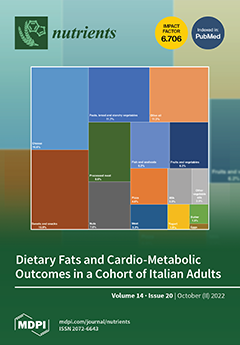Aims/hypothesis: 20–80% of Nonalcoholic Fatty Liver Disease (NAFLD) have been observed to have dyslipidemia. Nevertheless, the probable mechanism of dyslipidemia’s effect on NAFLD remains unclear. Mendelian randomization (MR) was utilized to investigate the relationship between lipids, inflammatory factors, and NAFLD; and also, to
[...] Read more.
Aims/hypothesis: 20–80% of Nonalcoholic Fatty Liver Disease (NAFLD) have been observed to have dyslipidemia. Nevertheless, the probable mechanism of dyslipidemia’s effect on NAFLD remains unclear. Mendelian randomization (MR) was utilized to investigate the relationship between lipids, inflammatory factors, and NAFLD; and also, to determine the proportion mediated by interleukin-17(IL-17) and interleukin-1β(IL-1β) for the effect between lipids and NAFLD. Methods: Summary statistics of traits were obtained from the latest and largest genome-wide association study (GWAS). The UK Biobank provided a summary of lipid statistics, which comprised up to 500,000 participants of European descent. And NAFLD GWAS summary statistics were obtained from the FinnGen Biobank which included a total sample size of 218,792 participants of European ancestry. In order to gain an overall picture of how lipids affect NAFLD, MR with two samples was carried out. Multivariable MR determined lipids direct effects on NAFLD after adjusting for inflammatory factors, namely IL-1β, interleukin-6(IL-6), interleukin-16(IL-16), IL-17, and interleukin-18(IL-18); those lipids comprise HDL cholesterol (HDL-C), LDL cholesterol (LDL-C), triglycerides (TGs), apolipoprotein A1 (ApoA1), and apolipoprotein B (ApoB). For the purpose of determining the MR impact, an inverse variance weighted (IVW) meta-analysis of each Wald Ratio was carried out, while other methods were also performed for sensitivity analysis. Results: We discovered a positive association between genetically predicted TGs levels and a 45.5% elevated risk of NAFLD, while genetically predicted IL-1β [(IVW: OR 1.315 (1.060–1.630),
p = 0.012) and IL-17 [(IVW: OR 1.468 (1.035–2.082),
p = 0.032] were positively associated with 31.5% and 46.8% increased risk of NAFLD, respectively. Moreover, TG was positively associated with 10.5% increased risk of IL-1β and 17.3% increased risk of IL-17. The proportion mediated by IL-17 and IL-1β respectively and both was 2.6%, 3.1%, 14.1%. Conclusion: Genetically predicted TGs, IL-1β, and IL-17 were positively associated with increased risk of NAFLD, with evidence that IL-1β and IL-17 mediated TGs effect upon NAFLD risk. It indicated that early diet management, weight management, lipid-lowering and anti-inflammatory treatment should be carried out for patients with hyperlipidemia to prevent the NAFLD.
Full article






